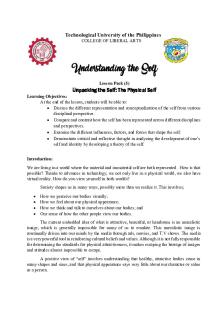Understanding the ECG Reading the waves - Harvard Health PDF

| Title | Understanding the ECG Reading the waves - Harvard Health |
|---|---|
| Course | Biomedical Physiology |
| Institution | Murdoch University |
| Pages | 2 |
| File Size | 149.7 KB |
| File Type | |
| Total Downloads | 34 |
| Total Views | 134 |
Summary
Download Understanding the ECG Reading the waves - Harvard Health PDF
Description
4/3/2019
Understanding the ECG: Reading the waves - Harvard HealthSHOP ▼ SIGN IN CART FREE HEALTHBEAT SIGNUP Pay My Bill »
HEART HEALTH
MIND & MOOD
PAIN
STAYING HEALTHY
CANCER
What can we help you nd?
DISEASES & CONDITIONS
MEN'S HEALTH
WOMEN'S HEALTH
Harvard Health Letter
Understanding the ECG: Reading the waves Published: February, 2011
The electrocardiogram (ECG) is one of the most common, enduring, and important tests in all of medicine. It's easy to perform, noninvasive, produces results right away, and is useful in diagnosing dozens of heart conditions. The ECG has taken on even more importance lately because a particular ECG pattern, called ST elevation, is a strong indication that a serious heart attack has occurred, and there's more emphasis than ever on treating heart attacks as soon as possible. An ECG isn't necessarily going to be part of a routine physical, but if you need medical attention because you have chest pain, sudden unexplained shortness of breath, or other symptoms that suggest a possible heart attack, you will almost certainly get an ECG. The ECG is a reading of the electrical impulses in the heart that activate the heart muscle and its blood-pumping action. Twelve electrodes axed to the skin on the chest, arms, and legs sense those impulses from various vantage points. Part of the reason the ECG has had such staying power is that the output is visual: a line graph with peaks and valleys, not a stream of numbers. As a result, reading an ECG is a matter of pattern recognition, not computation. There are many permutations, but someone can be trained to recognize the most common patterns relatively quickly. During a normal heartbeat, the electrical activity starts in a small patch of pacemaker cells called the sinus node. When the impulse activates the atria, it produces a small blip called the P wave (see the illustration below). Next it activates the main pumping chambers, the ventricles, and produces the big up-and-down in the middle, the QRS complex. The nal T wave is a recovery period as the impulse reverses and travels back over the ventricles. If the heart is beating normally, the whole cycle takes about a second (roughly 60 heartbeats per minute).
Normal
The P wave, QRS complex, and T wave occur in sequence in a regular pattern. Angina
Angina is chest pain from the heart muscle working without getting enough blood and oxygen. The ST segment dips down instead of being at (see arrow). Serious heart attack
The ST segment of the ECG is usually at. If it has a humped, elevated appearance, a serious heart attack is probably occurring (see arrow). The medical shorthand for ST elevation is "STEMI," so a STEMI heart attack is a serious one that needs immediate medical attention. Atrial brillation
Atrial brillation occurs when the two upper chambers of the heart move chaotically instead of pumping regularly. The P wave on the ECG disappears and is replaced by a jumpy baseline. The QRS complex occurs at "irregularly irregular" intervals.
Share this page:
Print this page:
Subscribe to Harvard Health Online for immediate access to health news and information from Harvard Medical School. Research health conditions Check your symptoms Prepare for a doctor's visit or test Find the best treatments and procedures for you
I'd like to receive access to Harvard Health Online for only $4.99 a month.
Explore options for better nutrition and exercise
Sign Me Up »
Learn more about the many benets and features of joining Harvard Health Online »
Disclaimer: As a service to our readers, Harvard Health Publishing provides access to our library of archived content. Please note the date of last review on all articles. No content on this site, regardless of date, should ever be used as a substitute for direct medical advice from your doctor or other qualied clinician.
Sign up for HEALTHbeat Digital Subscriptions Special Health Reports Print Subscriptions Customer Service About Us Licensing/Permissions Privacy Policy
© 2010 - 2019 Harvard University. All rights reserved.
https://www.health.harvard.edu/heart-health/understanding-the-ecg-reading-the-waves
2/2...
Similar Free PDFs

Understanding the Self- Reviewer
- 7 Pages

Understanding the self
- 39 Pages

Understanding-the-self
- 2 Pages

Understanding the group
- 11 Pages

Understanding-THE-SELF
- 94 Pages

Understanding the Self
- 13 Pages

Understanding THE SELF
- 6 Pages

Understanding The Self Lesson 8
- 6 Pages

Understanding The Self Lesson 9
- 10 Pages

Understanding The Self Lesson 5
- 4 Pages
Popular Institutions
- Tinajero National High School - Annex
- Politeknik Caltex Riau
- Yokohama City University
- SGT University
- University of Al-Qadisiyah
- Divine Word College of Vigan
- Techniek College Rotterdam
- Universidade de Santiago
- Universiti Teknologi MARA Cawangan Johor Kampus Pasir Gudang
- Poltekkes Kemenkes Yogyakarta
- Baguio City National High School
- Colegio san marcos
- preparatoria uno
- Centro de Bachillerato Tecnológico Industrial y de Servicios No. 107
- Dalian Maritime University
- Quang Trung Secondary School
- Colegio Tecnológico en Informática
- Corporación Regional de Educación Superior
- Grupo CEDVA
- Dar Al Uloom University
- Centro de Estudios Preuniversitarios de la Universidad Nacional de Ingeniería
- 上智大学
- Aakash International School, Nuna Majara
- San Felipe Neri Catholic School
- Kang Chiao International School - New Taipei City
- Misamis Occidental National High School
- Institución Educativa Escuela Normal Juan Ladrilleros
- Kolehiyo ng Pantukan
- Batanes State College
- Instituto Continental
- Sekolah Menengah Kejuruan Kesehatan Kaltara (Tarakan)
- Colegio de La Inmaculada Concepcion - Cebu





